When you delegate content creation to a freelance writer, agency, or someone on your staff, they may deliver something totally different from how you envisioned it.
Similarly, if you’re the one working on creating a piece of content for a company, you may not have full clarity on what is expected from it.
The result? Someone somewhere in the workflow doesn’t like it and wants a total rewrite. How can you prevent this?
With a content brief. A clear, complete content marketing brief is the not-so-secret way to keep everyone on the same page, and keep your content creation on the right track.
In this guide, we’ll take a look at what is a content brief, and how to prepare one for any piece of content you intend to work on. You’ll also get a free content brief template you can modify to fit your content specifications.
Disclaimer: If you buy any products through links on this site, I may earn a commission. But it doesn't make any difference to your cost, and it helps me keep this blog running. So you could always read my articles for free.
What is a content brief? (and free template)
Each individual piece of content should have a set of specifications laid out in advance. This is where content briefing comes in.
So what is a content brief? A content marketing brief is a document that provides the necessary direction and context for writing a single, specific piece of content.
It includes specifications such as the desired word count, topic, title, and keywords to use. Ideally, content briefing should also provide information on the content’s goals, audience, and a rough outline.
For example, here’s the content brief template we use. If you want, you can use this content brief example for free by making your own copy.

As you can see in the content brief example, the most crucial part of a content brief is that it’s documented. Conducting a meeting or sharing notes from a meeting on how a piece of content is to be created is not enough. It’s important to have a written record, and a content brief provides this record.
Preparing a content brief
Now that you know what is a content brief, you want to create a content brief that can produce the desired outcome.
So when using the content brief template, you need to know all the essential components and what details to add to each component. So here goes:
About the company
A content brief must have a short company bio, with information about the business, its products and services, target niche market, positioning in the industry, and the value proposition that separates them from the competition.
The idea is to explain the business in clear terms and what the brand stands for. Here’s an example:
Company Bio: Lawson Corporation
- Business Name: Lawson Corporation
- Business Address: 153 James Street, Boston, USA
- Email: Info@lawsoncorp.com
- Tel: 555-777-9999
General Business Activities – Lawson Corporation is a real estate company in Massachusetts. It conducts real estate marketing and consulting. Plus, it also undertakes all maintenance duties for its properties, along with security and surveillance.
Purpose – To be a national leader in the real estate industry by providing enhanced service experience, customer relationships, and profitability.
Mission – To build long-term, profitable relationships with our clients via exceptional customer service, innovation, and technology.
Target audience
Another major factor impacting the direction your content will take is the people it is being written for. Your content brief must include adequate relevant information about your target readers.
Each piece of content is meant for a very specific segment of your audience, which should be clear from your content brief.
- Who do you want to reach?
- What’s their age and gender?
- What do they do and what’s a typical day like for them?
- What are their problems and pain points?
- What gives them happiness and satisfaction?
- Which stage do they belong to in your sales and marketing funnel?
This information will help you build a persona, like this:

Image Source: Carmine Maestropierro
Without knowing exactly what goals the copy helps the readers achieve, there’s a high chance that content would not get written in a way to really help the audience.
For example, let’s say you’re delegating the writing of a guide on personal finance. And you fail to mention that the guide is meant for millennials.
Since the writer doesn’t have a clear idea of who the target audience is, the final piece may come out catering to the needs of baby boomers.
As you can imagine, the piece would be nothing like it was expected to be, as both these age groups have very different financial goals and preferences.
Another crucial part of a content writing questionnaire is what this piece of content will accomplish for the reader. – What exact needs or pain points you are addressing for the reader?
– Will it help solve a problem, educate, inspire to take action, or entertain?
– Will the reader be in a better place after having read the article?
The better you know your target audience, the better you’ll be able to serve them. In fact, you need to know them so intimately that when reading your content, they should feel like you’re reading their mind. That’s why adding audience information when writing a brief is a must.
Content type
There are different types of written content. Your content marketing brief should clearly specify what is to be created: a blog post, newsletter email, whitepaper, sales copy, ebook, presentation, or something else.

Topic & focus keywords
Next, in your content writing questionnaire, ask for a clear and specific topic, instead of something general. A concrete benefit promised in the headline makes people more likely to click and look for a solution to their problem.
A narrow topic not only helps you understand what exactly you need to cover, but also clarifies to the reader what they can expect to learn from the piece.
If you have a broad topic but need help narrowing it down, there are several tools that can be useful. The most prominent are:
- Title Generators: SEOPresser, FatJoe, and HubSpot.
- Keyword Research Tools: KWFinder, KeywordTool.io, Answer The Public.
If you care about SEO, then keyword research is a crucial component of your writing prep work. Based on the topic of your content, pick one main keyword and 2-to 3 secondary keywords to include in your content brief.
My personal favorite is a premium tool known as KWFinder, for its great user experience, affordability, and quality of data. But you can also go with one of the free tools that I mentioned above.
Enter your seed keyword in KWFinder. Seed keywords are the keywords you guess on your own related to the topic of your page.
These keywords help you start researching more keywords related to your page and then identify the ones you want to target.
Once you type in a seed keyword, KWFinder will show you hundreds of related keywords, and their associated data. You can also view how many searches happen for a keyword per month (also known as search volume).
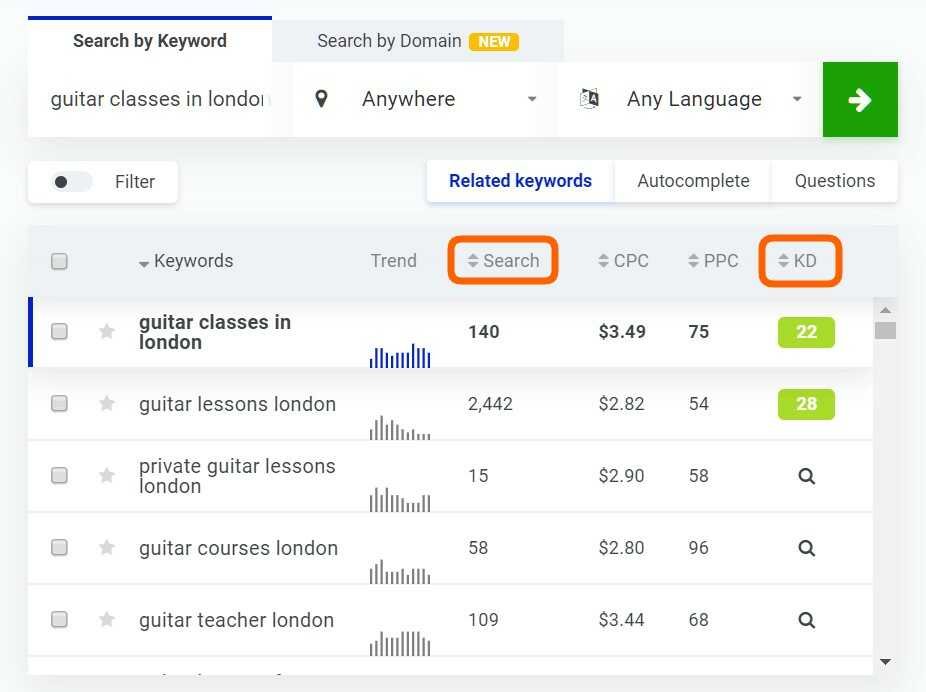
Another useful metric you’ll see is the difficulty score. This score can give you a good general idea of how easy or difficult it is to rank for a keyword. Ideally, you want to find and target keywords with high search volume and low difficulty scores.
Also, try to target long-tail keywords (keywords with 3 or more words). This way, you’ll have a better chance of ranking quickly and easily to the top of search engine results.
Long-tail keywords are also more likely to turn into qualified leads. In fact, according to Backlinko’s analysis of 306M US keywords, the vast majority of search terms (91.8%) are long-tail keywords.
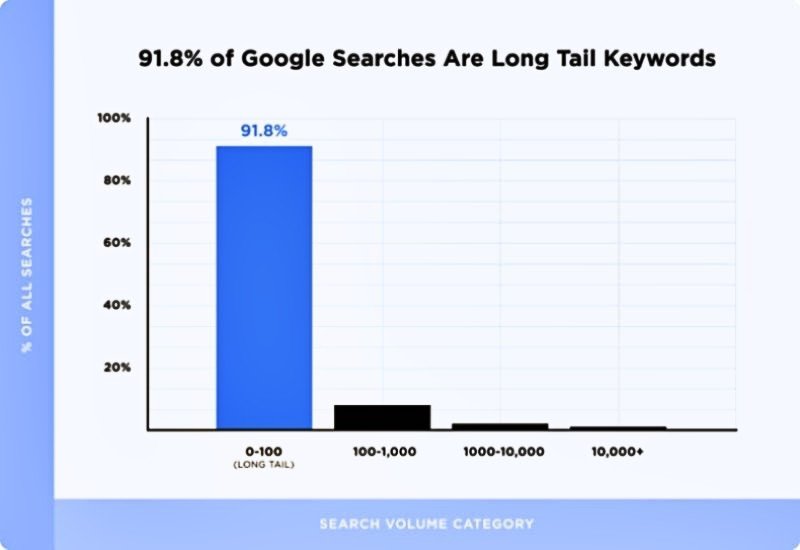
Image Source: Backlinko
Next, you may also want to select a few secondary keywords to add when writing a brief. These are the keywords your content may also rank for, apart from the primary keyword.
A great way to identify your secondary keywords is to see what keywords the similar or competing content is ranking for.
For example, let’s say your primary keyword is “hangover remedies”. You can use a SERP (Search Engine Result Pages) analysis tool like SERPChecker to identify the top-ranking content for this keyword.

Enter the keyword and click Analyze SERP. As you can see, the page that ranks number one is an article from harvard.edu.
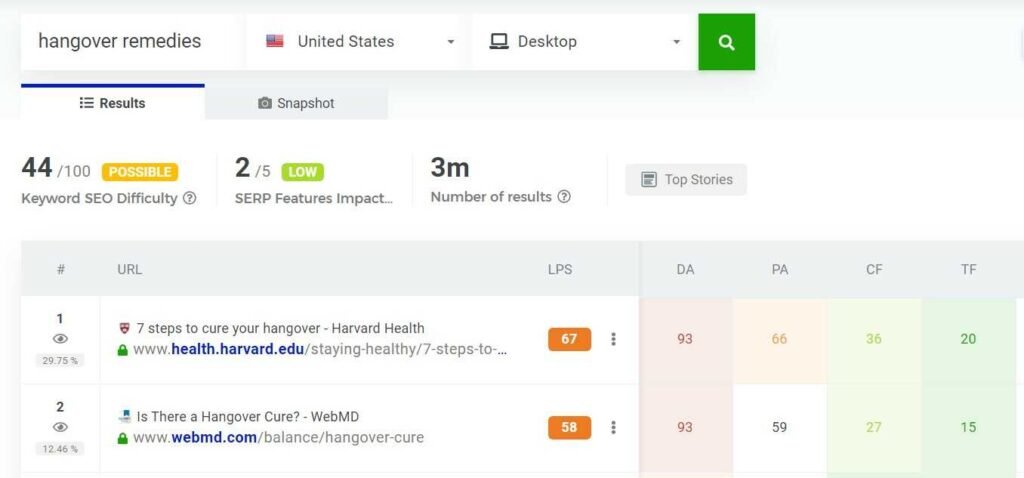
Now, using KWFinder’s Search by Domain feature, or the Mangools chrome extension, you can see what other keywords this page is ranking for. This way you can find more secondary keywords to include during the content briefing.
Content research & analysis
Whether you know your topic intimately, or only have a vague idea, proper research is essential to be able to cover it thoroughly, accurately, and authoritatively.
For most of the things you claim in your content, you need to have a credible source: a research study, real data, statistics, or an anecdote from the real experience of a subject matter expert in your company to back it.
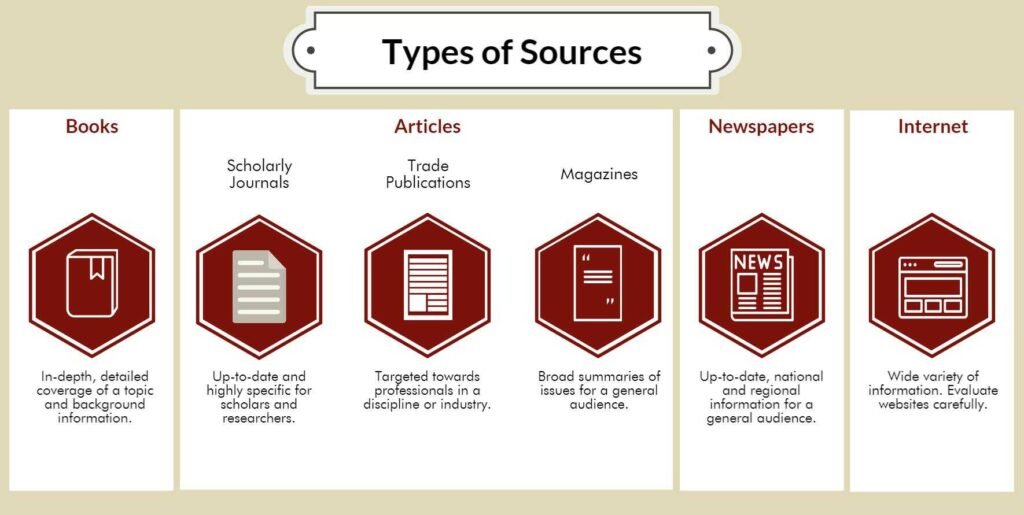
Numbers coming from data make your copy authoritative and trustworthy. Just imagine what could happen if the information you covered is found to be false or fake.
Your content is a reflection of your brand. A little sloppiness is not worth putting your reputation on the line.
So asking if your client or manager would want any specific research studies to be cited is a crucial part of a content writing questionnaire.
There are a number of sources that can be mentioned in the content writing brief for the writer to get more information and data on a topic.
- If the writer is required to refer to and cite a particular research paper, or get more information from specific sources or SMEs (subject matter experts in your staff), mention them when writing a brief.
- Get industry research from professional organizations, research companies, or reputable publications. Find relevant studies from reference websites online. Refer to websites like Forrester Research and Statista.
- Apart from using search engines, books, magazines, and online courses, also consider running studies/tests on your own to analyze data.
Include these in the content brief to ensure that the writer cites them to support the claims made, wherever applicable.
Content outline
Having an outline in your content marketing brief will help make your content easy to read and follow. Here’s an example of an outline for your brief format:
H1 – How to build and scale an internal comms (IC) team
H2 – Responsibilities of an internal communications team
– H3 Manage internal communication channels
– H3 Support external campaigns with an internal spin
– H3 Create plans for new technology implementation
– H3 Track and improve staff engagement
H2 – Roles needed for a superstar internal communications team
– H3 Internal Communications Head / Director
– H3 Business Partner
– H3 Channels Coordinator
– H3 Multimedia Executive
H2 – How to build and scale your IC function
– H3 Define goals
– H3 Plan roles and responsibilities
– H3 Document everything
– H3 Focus on efficiency
H2 Conclusion
As you can see, an outline helps creators/writers stick to the scope and not get carried away while writing. So they know which paths to take and which to ignore.
Think about the context, the key points that readers should know about the topic, what angles or mistakes most people overlook, and how you would organize it all.
Come up with a structure that makes the most sense, rather than scattering points here and there.
Similar/related resources
You don’t want content that’s just a rehash of the same information already available online. It has to be 10X better than its competitors.
You need to give information and value in a way that hasn’t been done before. So find the best content available on the internet on similar or related topics.
Look at the search engine results, as well as competitor websites, for the keywords you’re targeting.
Include this information in the content brief so whoever is writing the first draft can analyze things like format, length, tone, keywords, outline, information covered, and any gaps or weaknesses to improve on.
In addition, related resources will help you find your unique angle and ways to make your piece of content stand out. You can then state your findings and recommendations also in the content marketing brief.
The goal of your content writing questionnaire is to check if there is an opportunity to add something valuable to the conversation.
Content strategy and context
If you are jumping to writing without clarifying your objectives and building a plan first, you’re setting yourself up for failure.
Whatever topic you are going to write about, it should be in line with your content strategy and relevant to your target audience.
According to a survey by CMI, 62% of the most successful B2B content marketers have a documented content marketing strategy.

Image Source: Content Marketing Institute
A custom-made content strategy and calendar will tell you what kind of content you need to create, for whom, on what type of topics, how often, and more.
So what does this have to do with your content marketing brief?
When planning a piece of content and preparing a content brief, most people do share the topic on which to write. However, what they don’t share is the big picture.
- Why this topic, and why now?
- How does it fit into your mission and strategy?
- At which stage of the marketing funnel will it engage the target audience?
- What kind of angle the content should focus on?
- Pointers on which sub-topics are within and outside the scope.
- Thoughts on the intro, body outline, and conclusion.
Having a content strategy will help you answer these questions, and include those answers in your copywriting brief.
Without these important details, whoever is working on the piece of content will be forced to speculate and improvise. So this is the part of a content writing questionnaire to clearly explain your topic and the context surrounding it.
Objective/role in the customer journey
Another crucial part of content briefing procedure is where in the buyer journey are you targeting your audience, and what action you want them to take.
Although content can help you accomplish multiple goals, you should pick one main goal for your content brief to make the writing process more focused. For example, improving brand awareness is a primary objective for 55% of marketing influencers.

Image Source: Ascend2
In other words, there should be adequate information in the content marketing brief on what your brand hopes to accomplish from this piece of content.
For example, is this piece of content:
- an SEO article to get more traffic and brand awareness?
- a guest post to get exposure from a partner site?
- a gated white paper or case study to generate leads?
- a landing page copy to get more conversions?
- an update/documentation to educate customers on a new feature?
- a mix of these objectives or something else?
Your content will meet its desired objectives only when everyone on the team is clear on what those objectives are. So there’s no plausible excuse to not include or ask for these details in your content writing questionnaire.
Content message/takeaways
This is something that many brands overlook when writing a brief, but it can really supercharge your content and make all the parts even more effective.
Think about 3-to 5 core messages and takeaways you want the audience to remember about your brand and the content they just read.
- What will this piece convey about your brand?
- What messages will it embed in the minds of your audience?
- What lessons should they remember long after they read this piece?
- If a reader shares this content with someone else, what would they say?
For example, let’s say you plan to write about the different types of printers available in the market.
Through this piece, you want to convey to the reader that laser printers are better than inkjet printers.
And although laser printers are more expensive, your company has figured out a way to make them at the same cost as inkjet printers. So you have the most affordable laser printers.
Then your content writing brief must mention these points as the takeaways of the piece for the reader. So whoever is writing can make sure this information is being communicated in subtle or explicit ways as applicable.
Workflow and deadlines
Some pieces of content are produced consistently according to a set schedule, while others are more specific and required urgently for an upcoming event or meeting.
Your content brief should clearly indicate what category this piece of content falls into, along with the expected timeframes.
In addition, your content brief would also mention one or more team members who will be responsible for owning and completing each of the milestones. For example, based on your content writing workflow, these stages may include:
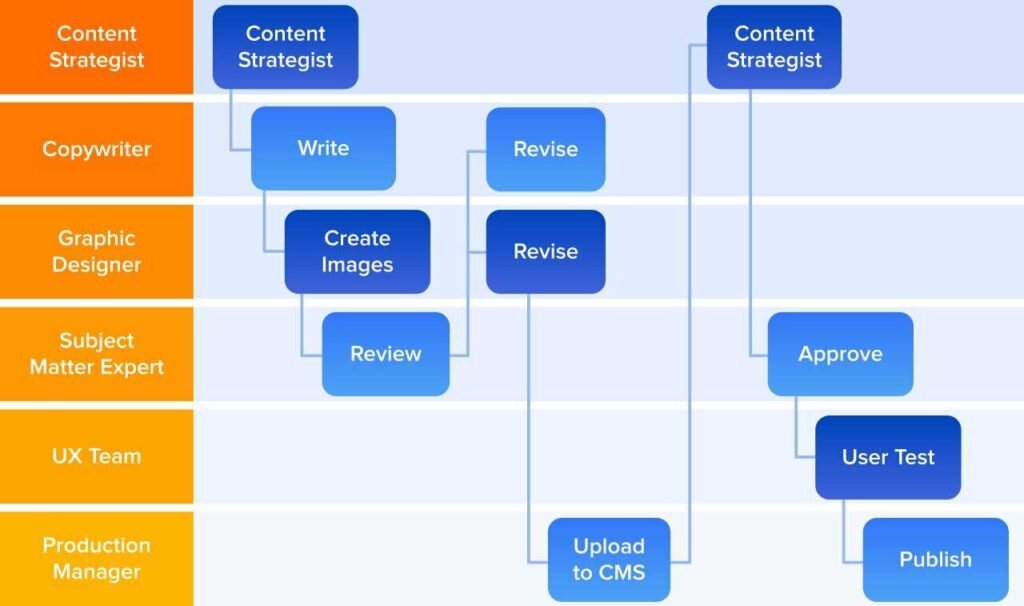
Image Source: Slickplan
At the very least, a content writing questionnaire should ask about the deadline for when the content is to be delivered.
Aim for getting the first draft at least two weeks before publication. Otherwise, you’ll make the copywriting project prone to delays on occasion, when a roadblock gets in the way.
Visual specifications
If I had a nickel for every time I have seen content creators and marketers treat images like an after-thought! It’s no secret that visual content performs better than non-visual content, regardless of the performance metric you pick.
In a study by Venngage, the majority of marketers said that visual content is a key component of their marketing strategy.

Image Source: Venngage
You can also gauge the same from the fact that all the social media networks which have exploded in popularity in recent years are inclined towards visual content.
Think about Instagram, YoutTube, TikTok, or Pinterest. What is the type of content people are sharing, consuming, and engaging with the most? It’s either images/graphics or motion videos.
Needless to say, your content brief format must have a strategy and specifications for how to embed visuals in your piece of content.
As humans, we are highly visual and easily notice discrepancies in such areas. If your images are low quality or irrelevant to your topic and brand, it will turn the readers off.
All the aspects of design, including the colors used in images and the typography of your content, should be consistent with your brand assets. Your content questionnaire will include questions such as:
- Who will be responsible for embedding visuals?
- How will he/she determine which parts need a visual component?
- What type of visuals can or cannot be used?
- Will you use free stock images/videos, buy premium, or create in-house?
- How will the images/videos be sourced/created?
- If an image requires citing the source, where/how will it be mentioned?
- What will be the acceptable file types, sizes, and dimensions?
- Do you have/need graphic design/editing expertise?
- How will you take and annotate screenshots, if needed?
- Which parts of content will absolutely need a visual?
In addition, also consider adding examples when writing a brief to show the type and placement of visuals in a piece of content. This will go a long way in making everyone understand better.
The look and feel of your content should match that of the rest of the website. Keep all the elements of your content aligned to your brand’s theme, audience, and personality.
A great way to ensure this is to create some image templates with consistent fonts, colors, and overall design. Then use them to create new designs when needed. This will not just ensure copywriting consistency but also save time.
Voice, tone, and writing style
Similar to design, your brand’s voice should also be consistent throughout. But research by Semrush has found that 75% of all content is too casual for the subject matter And an additional 30% uses sentences that are overly formal.

Image Source: Semrush
Every brand has a unique personality and target audience. And this uniqueness should reflect in all its content and communication.
For example, an entertainment publication for teens and young adults like BuzzFeed would be more inclined toward writing copy in a fun, casual, and youthful way.
On the other hand, an enterprise software giant like Adobe would want to sound more professional, mature, and credible.
If you don’t have a consistent tone, voice, and style reflecting through your content, you are making your brand easy to forget.

Image Source: ImpactBND
So before you begin writing a brief, it’s crucial for your brand to have a properly defined voice, tone, and style of writing. All these things together create a unique experience that makes your brand memorable.
These specifications should be clearly addressed in the content briefing process. This part is usually taken care of when developing a style guide for your brand.
Once there are specific guidelines pertaining to your brand’s voice, all your copywriting should be done according to these standards.
So if your organization already has a style guide, you can just borrow this information from there. If not, it’s not too late to build one from scratch.
Stop any content creation activities that are happening to do this first. It’s that important. Schedule meetings with whoever you need to discuss and agree upon a brand identity, voice, and tone.
Your brand character should be clear to everyone involved in content creation. Only then it will reflect in the content writing questionnaire and reach the readers.
Final thoughts on a content brief
To sum up, a content marketing brief or questionnaire is an essential document that should precede writing any piece of content.
This document should have all the information we discussed above and more based on your specific situation.
A proper content brief will significantly reduce the need for the writer and other stakeholders to have to further investigate aspects. So they can focus on what they do best and deliver the content exactly as expected.
Did we miss anything? Did you try these tips for writing a brief? Do you have any questions or comments about the brief format? Share your thoughts below in the comments section.



